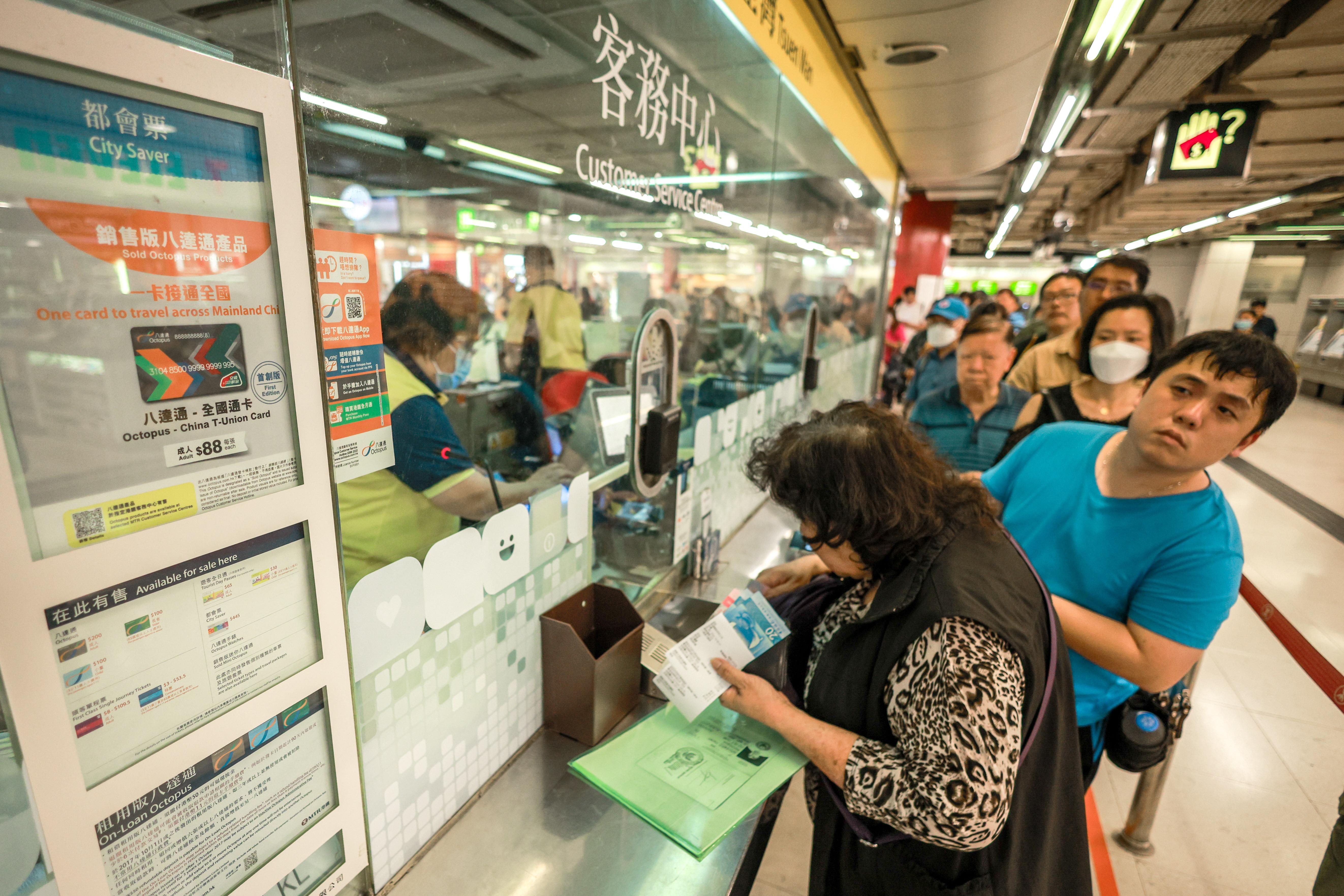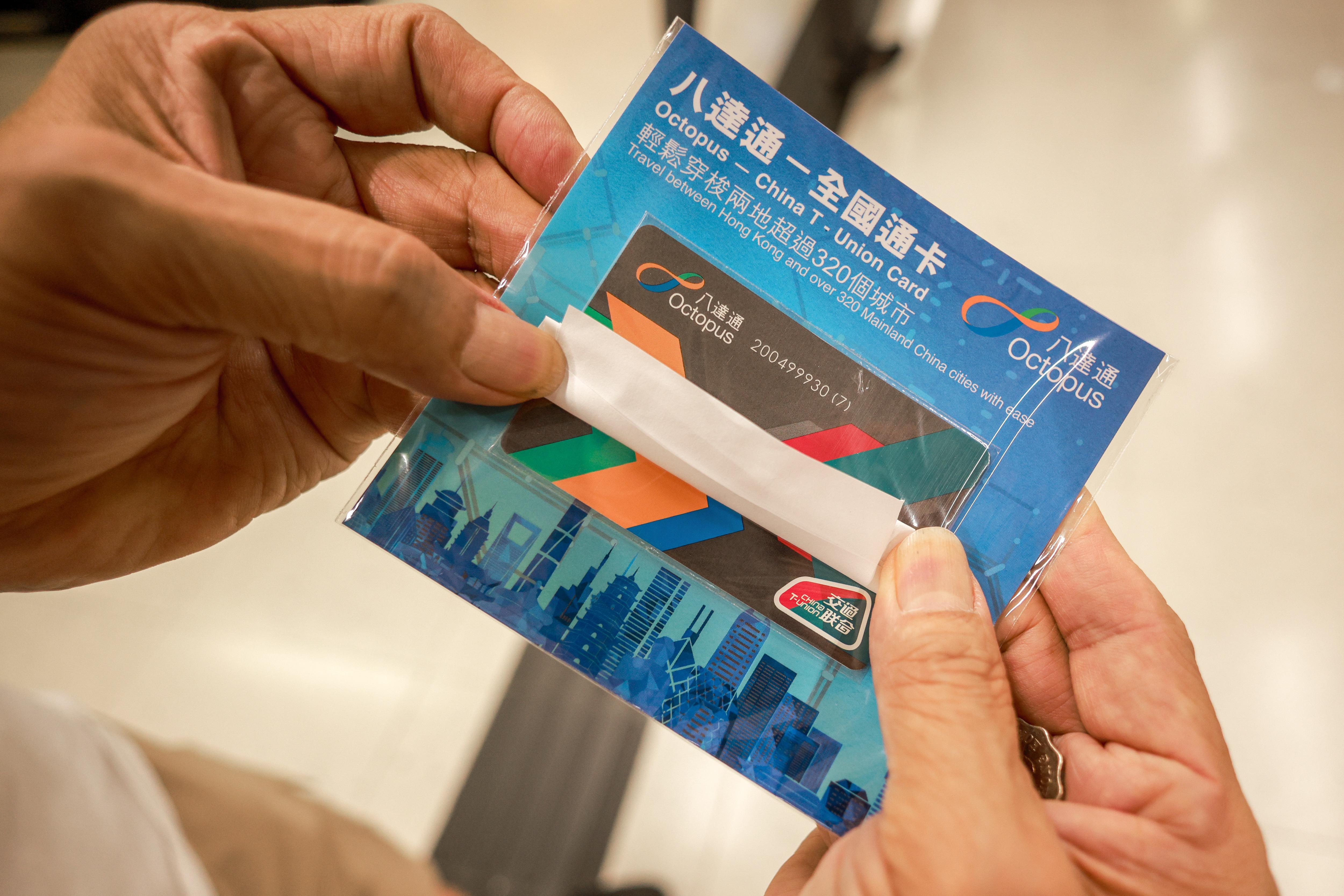 Hong Kong SAR residents queue up to purchase Octopus-China T-Union cards at the Tsuen Wan MTR Station on March 26, 2024. People can use the Octopus card on public transport in more than 330 Chinese mainland cities. (ANDY CHONG / CHINA DAILY)
Hong Kong SAR residents queue up to purchase Octopus-China T-Union cards at the Tsuen Wan MTR Station on March 26, 2024. People can use the Octopus card on public transport in more than 330 Chinese mainland cities. (ANDY CHONG / CHINA DAILY)
Hong Kong’s railway and bus operators will be in full swing for the upcoming Easter and Qingming holidays to cope with an estimated 11 million cross-boundary travelers, as a new Octopus card was launched on Tuesday, enabling residents of the special administrative region to use it for public transport on the Chinese mainland.
The Immigration Department expects about 11 million travelers to pass through SAR-mainland checkpoints between March 28 and April 7, with up to 9.5 million travelers, or 86.4 percent, using land ports.
MTR Corp Ltd – Hong Kong’s sole railway operator -- said it will add about 300 train trips during certain hours on its Island Line, Tsuen Wan Line, South Island Line and Disneyland Resort Line from Friday -- the first day of the Easter-Qingming holiday break – to April 1, to cater to the heavy passenger traffic
MTR Corp Ltd – Hong Kong’s sole railway operator -- said it will add about 300 train trips during certain hours on its Island Line, Tsuen Wan Line, South Island Line and Disneyland Resort Line from Friday -- the first day of the Easter-Qingming holiday break – to April 1, to cater to the heavy passenger traffic.
MTR has shortened train intervals on its East Rail Line, which links Hong Kong's urban areas with Lo Wu and Lok Ma Chau checkpoints, on weekends and on public holidays to accommodate more cross-boundary passengers.
The railway operator has also stepped up the frequency of its K52A bus route to every 15 to 30 minutes to transport people to Tsang Tsui Columbarium in Tuen Mun to sweep the tombs of the deceased.
From Mar 22, Kowloon Motor Bus Company has added short-haul trips on its B1 route to the Lok Ma Chau Spur Line control point, linking Shenzhen’s Futian Port, and B9 route to Heung Yuen Wai checkpoint connecting Shenzhen’s Liantang Port. The trips will terminate at Yuen Long instead of the routes’ original terminals at Tin Tsz and Tuen Mun.
Services on KMB’s W2 route to West Kowloon railway station, and on some routes bound for East Rail Line stations will also be stepped up on certain days during the holidays. For the Qingming Festival, some bus routes to local cemeteries will be also strengthened.
Another bus operator, Citybus, will shorten the intervals of its route B7 and B8, which terminate at Heung Yuen Wai Port, to every five and six minutes, respectively, during the holidays. For the B3X route to Shenzhen Bay Port, the frequency will be increased to every seven minutes on certain days.
Citybus also plans to enhance the services of its airport bus fleet, including A21 and A23, for air travelers. An overnight airport route NA10 will be added to serve residents on Hong Kong Island.
 A Hong Kong SAR resident holds an Octopus-China T-Union card at the Tsuen Wan MTR Station on March 26, 2024. People can use the Octopus card on public transport in more than 330 Chinese mainland cities. (ANDY CHONG / CHINA DAILY)
A Hong Kong SAR resident holds an Octopus-China T-Union card at the Tsuen Wan MTR Station on March 26, 2024. People can use the Octopus card on public transport in more than 330 Chinese mainland cities. (ANDY CHONG / CHINA DAILY)
Hong Kong residents planning to spend their holidays on the mainland can use a new Octopus card for public transport in 336 cities on the mainland.
The dual-function card, costing HK$88 ($11.3) each, can be purchased at all Circle K convenience stores in Hong Kong from March 26, as well as seven designated MTR stations, including Admiralty and Kowloon Tong. The card can also be used in the SAR for shopping and travel on the MTR, buses and ferries.
On the mainland, the new Octopus card can be used to pay for public transport in partnership with China T-Union -- a project aimed at integrating the payment systems of nationwide public transportation networks, covering more than 38,000 bus routes, 285 metro lines and some ferry routes in more than 336 cities. However, the card cannot be used to make retail payments on the mainland for the time being.
Payments made on the mainland will be settled in Hong Kong dollars, and cardholders can top up their cards as they do with a normal Octopus card in Hong Kong. Each card’s balance is capped at HK$3,000.
Cardholders can also use the new card to pay for travel on shuttle buses on the Hong Kong-Zhuhai-Macao Bridge from Hong Kong to Zhuhai or Macao. Relevant payments will be cleared in renminbi.


